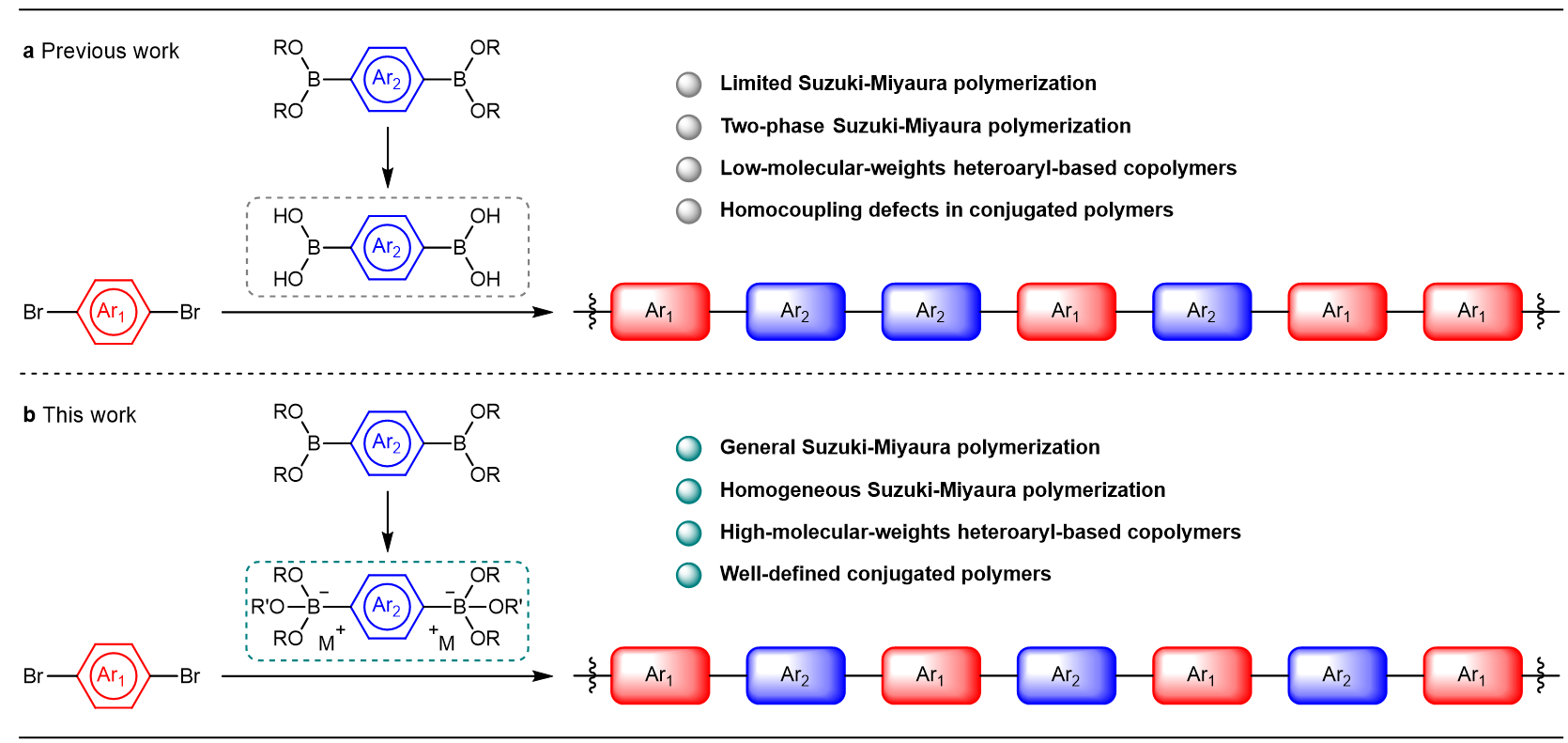The emergence of conductive polymers broke people's traditional knowledge and was awarded the 2000 Nobel Prize in Chemistry. Conjugated polymer semiconductor materials developed based on conductive polymers have the advantages of easy control of properties, solution processing, flexibility and foldability, and are the most ideal materials for organic electronic technology. However, due to the limitations of existing synthesis methods and means, the current macro-synthesized conjugated polymers have shortcomings such as many structural defects and poor batch reproducibility, which hinders the large-scale commercial application of polymer semiconductor materials. Therefore, the development of high-quality New methods for macro-scale and precise synthesis of molecular semiconductor materials are expected to pave the way for the large-scale application of conjugated polymers and promote the development of organic electronics technology.
The Suzuki−Miyaura cross-coupling reaction was first reported by Suzuki in the 1970s. Due to its non-toxic and high activity, the reaction has been widely used in the construction of carbon-carbon bonds and was awarded the 2010 Nobel Prize in Chemistry. However, this reaction still has the following problems:
1) Borides are easy to be protonated and deborated, resulting in low substrate versatility. They are mainly suitable for phenyl boronated substrates, but are often limited for widely used aromatic heterocyclic boronated substrates;
2) The heterogeneous reaction system of organic solvent/water is commonly used, which limits its scale-up production application. Therefore, although this method has outstanding advantages, it is difficult to be applied to the precise and macro-scale synthesis of conjugated polymers.
In order to solve the above problems, scientists have made a lot of progress in related fields; however, half a century has passed, and the above problems have not yet been fully solved and applied to the precise and macro-scale synthesis of conjugated polymer semiconductor materials.

Our group has long been committed to the green and precise synthesis of conjugated polymer semiconductor materials and has achieved a series of important research results (Nat. Commun. 2022, 13, 144; Angew. Chem. Int. Ed. 2019, 58, 5044; Angew . Chem. Int. Ed. 2022, 61, e202115969; Angew. Chem. Int. Ed. 2023, 62, e202306307; Angew. Chem. Int. Ed. 2023, 62, e202309922.). Recently, we reported a new Suzuki-Miyaura room temperature homogeneous polymerization method that is widely applicable and can be produced in large quantities. Through the innovation of the catalytic system, the in-situ deboronization of heteroaryl borate esters was completely suppressed, and kilogram-scale macropolymerization was achieved at the same time, solving the half-century-long problem of Suzuki-Miyaura cross-coupling polymerization. More importantly, this method basically eliminates the self-coupling structural defects and batch differences of polymers, and achieves green and precise synthesis of conjugated polymers. The conjugated polymer materials synthesized based on this method have significantly improved crystallinity and carrier mobility due to the significant reduction or even elimination of structural defects, thus greatly improving the performance of polymer field effect tubes and solar cells. , is expected to promote the commercial application of conjugated polymers.
The relevant research results were published in Nature Materials under the title "General room temperature Suzuki−Miyaura polymerization for organic electronics". Dr. Xiong Haigen of the research group is the first author of the paper. Professor Huang Hui and Associate Professor Shi Qinqin of the School of Materials Science and Optoelectronics of the University of Chinese Academy of Sciences and Professor Tobin J. Marks of Northwestern University are the co-corresponding authors of the paper. Professor Marks’ team is processing Made important contributions to high-performance field effect transistors. The author thanks the National Natural Science Foundation of China, the Chinese Academy of Sciences and other related projects for funding.
Link:https://www.nature.com/articles/s41563-023-01794-9


